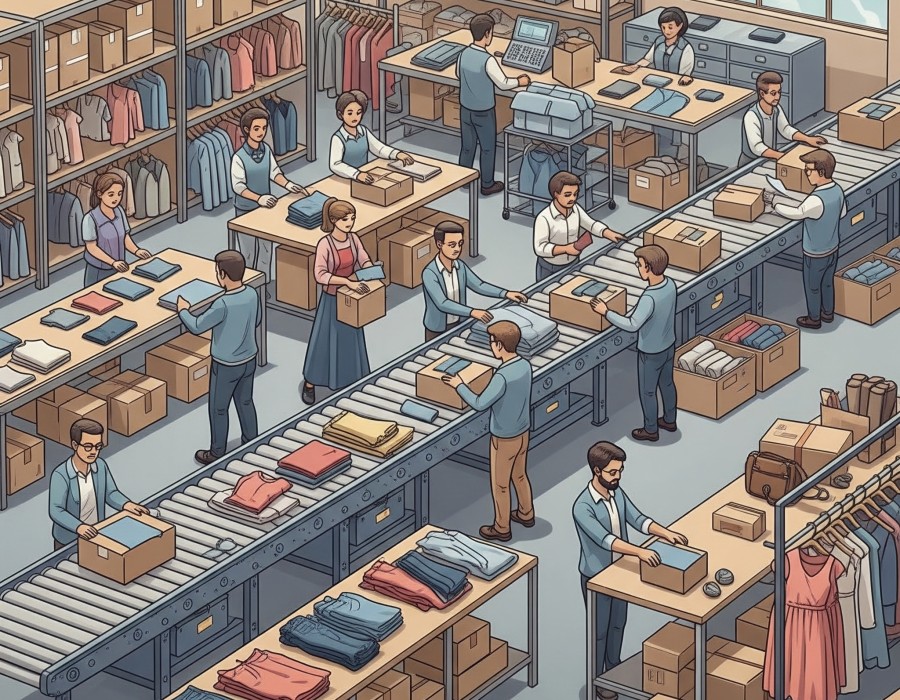The Race to Reinvent Fashion Logistics
In 2025 the runway is no longer the only place that defines style. Shoppers watch live drops on their phones during a morning commute and expect those same pieces at their doors before nightfall. A seismic shift in back-end operations is making that possible as data science robotics and human know-how merge into a single fast-moving engine. Brands that once agonized over shipping delays now speak in hours not days thanks to a new breed of specialists rewriting every rule of distribution.
Why Speed Drives Everything
Social platforms move trends at breakneck velocity. A jacket captured in one influencer reel can sell out by lunch. Success depends on keeping inventory close to demand and processing each order with surgical accuracy. Smart warehouses memorize buying patterns for every zip code and reposition stock overnight. The result is a delivery promise so tight that express upgrades start to look slow.
Tech That Powers the Transformation
Machine learning predicts demand down to the neighborhood level by weaving together weather reports street events and search spikes. Autonomous robots glide between narrow aisles twenty four seven pulling totes in routes optimized to the second. Meanwhile computer-vision checkpoints confirm color and size in milliseconds stopping errors before they enter a carton. These touches are invisible to shoppers yet they shape every unboxing moment.
Players Leading the Charge
Global giants like ShipBob and Deliverr keep expanding their coastal hubs while regional innovators in Los Angeles Brooklyn Berlin and Seoul experiment with micro centers tucked inside vacant retail units. Each operator brings its own specialty whether that means handling bespoke embroidery or mastering carbon-neutral bike delivery. Picking the right apparel fulfillment company depends on matching those talents to the quirks of a brand catalog and the geography of its fan base.
Micro Warehouses in the Urban Core
Big city real estate once felt too pricey for storage but smart racking systems and mezzanine automation squeeze thousands of units into footprints smaller than an average café. A hoodie ordered at noon in Chicago might travel fewer than three miles to a customer who receives it before clocking out from work. This local loop slashes emissions along with transit costs creating a win for both margin and climate.
Sustainability Is Non-Negotiable
Fashion’s carbon footprint has faced public scrutiny for years yet practical change only accelerated when fulfillment centers started measuring every watt and mile. Renewable energy now powers conveyor belts while right-size packing algorithms reduce corrugate waste by double digits. Couriers swap diesel vans for electric cargo bikes in dense neighborhoods. The environmental payoff is impossible to ignore and shoppers reward it with louder loyalty. For any apparel fulfillment company seeking long-term relevance green metrics sit alongside pick-rate and on-time delivery in quarterly dashboards.
Returns Reinvented
Clothing sees higher return percentages than any other e-commerce sector. Forward-thinking hubs turn that challenge into an advantage by routing unwanted items to the nearest inspection point instead of a distant national center. Quality teams rescan seams steam wrinkles and relist pieces within hours so inventory cycles back into stock while still in season. Data from each return loops into fit algorithms that fine-tune size charts and product pages, lowering future send-backs.
Personalization at Pack-Out
Packaging used to be an afterthought. Today it doubles as brand theater. Dynamic printing stations inside fulfillment centers add the customer’s first name to an insert or produce limited-run tissue that ties into a seasonal story. Customization happens without slowing the line because printers sync to order queues just like a robotic arm. The experience feels bespoke though it scales to thousands of boxes per shift.
Disruption from Start-Ups
While established firms refine automation, a fresh wave of start-ups tests bold ideas. Some offer cloud-based slotting that auctions shelf space in real time. Others build mod-pods—self-contained warehouse cubes shipped on flatbeds—that go live in forty eight hours near an event or festival. Each experiment presses the industry toward greater flexibility and keeps incumbents on their toes.
Choosing the Right Partner
No two brands share the same pain points. A streetwear label dropping weekly capsules craves lightning speed and promotional kitting. A luxury house shipping silk gowns needs climate-controlled storage and white-glove courier service. Vetting begins with basics such as accuracy rate and system integrations but the deeper question is cultural fit. Will the partner protect brand equity with the same zeal as a creative director Protecting that identity while achieving scale marks the difference between growth and dilution. An apparel fulfillment company capable of both is worth its weight in gold thread.
Looking Beyond 2025
Expect fulfillment spaces to grow smarter not larger. Vertical storage will climb toward ceilings, drones may undertake short-haul transfers between rooftops, and artificial intelligence will predict fashion fads before influencers even hit record. Brands able to plug seamlessly into this ecosystem will treat logistics as an amplifier rather than a constraint.
Closing Thought
Fashion thrives on immediacy but consumers also crave authenticity and responsibility. The logistics innovators highlighted here prove that speed, personalization, and sustainability can coexist when technology, infrastructure, and human creativity align. In a market racing ahead at algorithmic pace, the brands that forge the strongest ties with the right operational partners will own the next era of style, one perfectly packed parcel at a time.





Comments